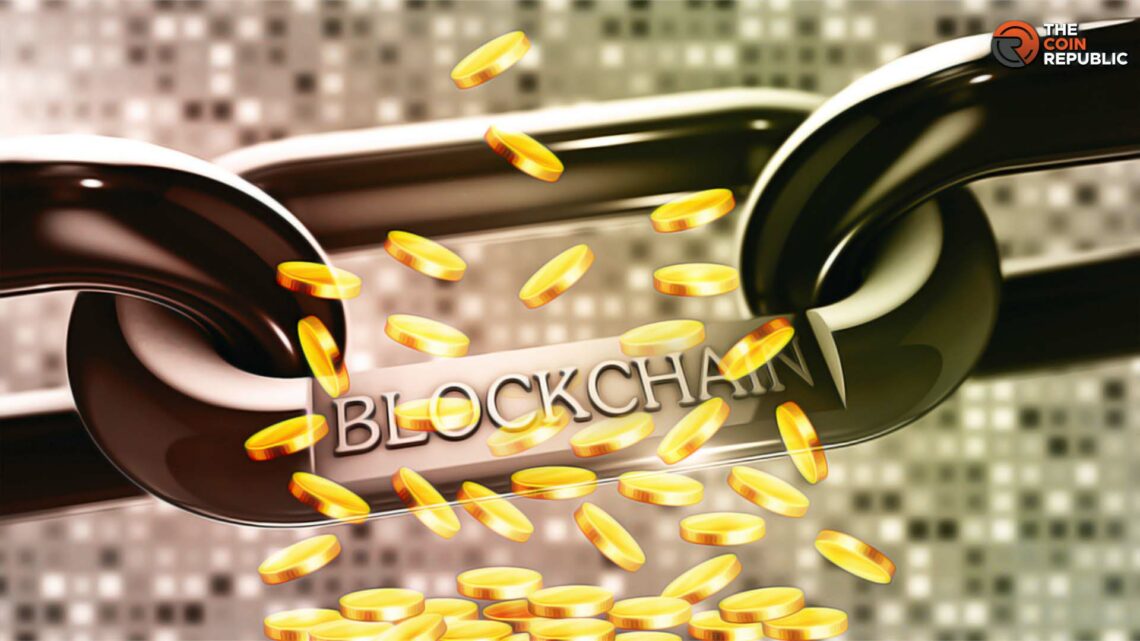- 1 Tokenization democratizes asset ownership and broadens investment horizons.
- 2 Blockchain ensures transparency, security, and efficiency in tokenized trades.
- 3 Diverse industries embrace tokenization for enhanced asset management.
Blockchain technology has brought about revolutionary changes, central to which is tokenization. This transformational tool redefines how assets are valued, traded, and perceived, but it also brings various challenges. This report delves deep into the intricacies of tokenization, its manifold benefits, potential risks, and the industries it stands to disrupt.
Understanding Blockchain Technology
Often hailed as a groundbreaking technology, blockchain fundamentally operates as a decentralized digital ledger. Instead of relying on a singular, centralized entity or database, this ingenious system meticulously records and verifies transactions across a vast network of computers. Each of these transactions is stored in interlinked blocks, ensuring a distributed form of data management that inherently boosts security.
The brilliance of blockchain rests in its commitment to transparency and immutability. Every transaction made is transparent to all participants in the network and, once added, cannot be altered or deleted. This incorruptible nature makes the system resistant to fraud and external hacks.
Its foundational attributes paved the way for innovations such as tokenization. By providing a secure and transparent environment, blockchain serves as the backbone, enabling the representation of real-world assets in a digital format, thereby bridging the tangible and intangible realms of asset management.
How Tokenization Works
At the intersection of technology and finance lies a transformative concept known as tokenization. It’s the sophisticated process of converting an asset’s intrinsic value and rights into a digitized format on a blockchain. To put it in simpler terms, envision having a prized artwork, a unique masterpiece in high demand.
Traditionally, options were limited if you wanted to capitalize on its value without selling it outright. Enter tokenization, which offers an innovative solution. This process permits the division of the artwork into multiple digital tokens, with each token signifying a specific portion of the artwork’s overall value.
Digital tokens, once generated, present a novel proposition for potential investors. Rather than necessitating the acquisition of an entire artwork, these tokens offer a fractional stake in its financial value. This approach mirrors buying corporate shares, but in this context, the investment is in tangible assets like art. By employing this innovative strategy, owners can derive financial value from their possessions, and simultaneously, the investment arena becomes more inclusive. This expansion enables a wider range of investors to venture into previously out-of-reach niches.
Benefits of Tokenization of Assets
Tokenizing assets offers numerous advantages:
- Liquidity: Tokenizing illiquid assets, like real estate or art, can make them more easily traded.
- Transparency: Blockchain ensures that all token transactions are transparent, boosting investor trust.
- Accessibility: Assets previously inaccessible to many can now be invested in, even in small fractions.
- Efficiency: Tokenization can simplify processes, potentially reducing transaction costs and time.
Tokenization Use Cases
Several sectors are recognizing the power of tokenization:
- Real Estate: Instead of buying a whole property, investors can own tokens representing a part of it.
- Art and Collectibles: Artworks can be tokenized to allow partial ownership, making art investment more accessible.
- Intellectual Property: Musicians or authors can tokenize their work, allowing fans to own a share of their royalties.
- Supply Chain: Companies can tokenize their inventory, streamlining the supply chain process.
Challenges and Risks of Tokenization
However, with innovation comes challenges:
- Technical Hurdles: Tokenizing assets demands a robust technical infrastructure, and glitches can be catastrophic.
- Market Risk: The value of tokens can be volatile, depending on market demand and perception.
- Security Concerns: While blockchain is secure, token exchanges can be vulnerable to hacks.
- Lack of Understanding: Many potential investors need a clearer grasp of tokenization, leading to hesitancy.
Regulatory Considerations for Tokenization
Tokenization’s legal landscape remains a gray area in many jurisdictions. Regulatory bodies are racing to catch up, often posing questions such as:
- How are tokens classified as securities, commodities, or something new altogether?
- What are the tax implications of token trading?
- How do we protect investor rights in a largely uncharted territory?
Countries are developing frameworks to answer these questions, ensuring the tokenization boom does not lead to consumer busts.
Tokenization Platforms and Technologies
Tokenization platforms and technologies stand out as game-changers. These platforms facilitate the conversion of tangible and intangible assets into digital tokens, allowing for unique investment opportunities and more efficient asset management.
Nature and Purpose
Tokenization platforms predominantly function on blockchain technology. They allow assets – from real estate and art to stocks and bonds – to be represented as digital tokens. This process democratizes access, enabling more individuals to invest in traditionally exclusive assets.
Popular Platforms
- Ethereum: Widely recognized as a pioneering platform in the tokenization space, Ethereum’s smart contract functionality has made it a favorite for creating and managing digital tokens.
- Binance Smart Chain (BSC): Gaining traction for its speed and affordability, BSC is becoming a preferred choice for many looking to tokenize assets without hefty transaction fees.
- Tezos: Known for its on-chain governance and proof-of-stake consensus mechanism, Tezos offers a more energy-efficient approach to tokenization compared to some proof-of-work systems.
As the financial domain continues integrating with the digital world, tokenization platforms and technologies set new asset management and investment standards. Their capacity to enhance liquidity and the promise of transparency and security positions them as vital tools for the modern investor.
Tokenization in Different Industries
While we’ve touched on real estate, art, and intellectual property, the horizon of tokenization extends much further:
- Healthcare: Tokenizing medical records can lead to secure, seamless sharing of patient data.
- Education: Institutions can tokenize courses or modules, allowing students to choose, customize, and pay for only what they want.
- Agriculture: Tokenizing agricultural produce can lead to more efficient trading systems.
Conclusion
The paradigm shift brought about by tokenization is undeniable. As blockchain technology matures, so will the applications and nuances of tokenizing assets. While challenges persist, the prospective benefits of democratizing investment, boosting transparency, and revolutionizing industries make tokenization a trend that’s not just here to stay but poised to redefine the future.

Adarsh Singh is a true connoisseur of Defi and Blockchain technologies, who left his job at a “Big 4” multinational finance firm to pursue crypto and NFT trading full-time. He has a strong background in finance, with MBA from a prestigious B-school. He delves deep into these innovative fields, unraveling their intricacies. Uncovering hidden gems, be it coins, tokens or NFTs, is his expertise. NFTs drive deep interest for him, and his creative analysis of NFTs opens up engaging narratives. He strives to bring decentralized digital assets accessible to the masses.


 Home
Home News
News










